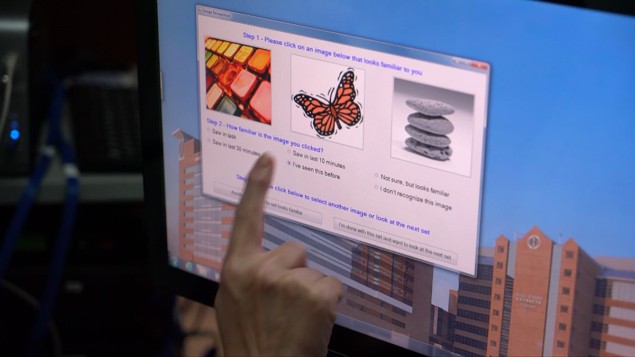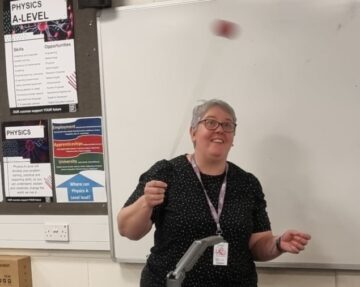
An electronic prosthetic system could help people with impaired memory – due to Alzheimer’s disease, traumatic brain injury or epilepsy – remember specific information. The new technology, being developed by researchers at Wake Forest University School of Medicine and the University of Southern California, works on the hippocampus, a part of the brain involved in making new memories.
Brain–computer interfaces, such as robotic limbs, establish communication between the brain and an external device. The hippocampus (humans actually have two hippocampi, one in each hemisphere of the brain) can, to some degree, grow new neurons. But scientists haven’t found a way to repair hippocampal damage. The neural prosthetic developed by the researchers uses models derived from hippocampal electrical activity to stimulate recall.
“Most brain control interfaces have relied on the brain figuring out how to deal with input from things. We’re working on how to figure out how to match what the brain is doing,” says Brent Roeder, a research fellow at Wake Forest who has been working on the project for nearly a decade. “We’re figuring out, what are the possible ways to enhance memory function, and which ways work best for what people and what type of conditions?”
Encoding and decoding memory
In a study published in 2018 in the Journal of Neural Engineering, the team stimulated neurons in the hippocampus in real time using a multi-input multi-output nonlinear mathematical model. “[In that study, the model] didn’t care what you were trying to remember…it was just trying to help your hippocampus work better,” Roeder explains.
In their most recent work, reported in Frontiers in Computational Neuroscience, the researchers isolated electrical activity to specific neurons and then used that information to stimulate the hippocampus to see if that could help people remember specific images better.
The study included 14 adults – all of whom had a diagnosis of epilepsy and were participating in a diagnostic brain-mapping procedure in which electrodes were placed in at least one hippocampus. The participants were shown different categories of images (animal, building, plant, tool or vehicle) in a visual delayed match-to-sample memory task. The researchers identified common neural activity in the hippocampus for each image category and used this information to derive a mathematically calculated, fixed firing pattern. This firing pattern was then used to stimulate the hippocampus during a visual recognition memory task.
“We were really testing two things in this study. The first is, can you stimulate for specific information? And the second was, how good are we at stimulating for the information we want to stimulate?” says Roeder. “So the answer to the first question is yes, you can stimulate for specific information. The answer to the second question is, well, there’s a lot of room for improvement.”
The researchers observed both increases and decreases in memory performance. In approximately 22% of cases, there was a difference in how well participants remembered images they had been shown before. When stimulation was delivered on both sides of the brain, almost 40% of participants with impaired memory function showed changes in memory performance.

Chaos plays a role in how memories are forgotten, simulations suggest
“The example I give is, you’ve seen a waiter carry a tray on their fingers. They’re not supporting the whole tray, they’re supporting part of the tray. But because those parts of the tray are connected to the rest of the tray, they lift the whole tray,” Roeder explains. “Our memory is associative. We’re not trying to support all of the memory – we’re trying to support part of the neural activity to boost all of the memory.”
The researchers conclude that there may have been more overlap between image categories than they had anticipated (for example, animals are often found near plants). Making image categories more distinct, by showing colours or directions instead of images, for instance, could help improve the performance of the electronic prosthetic.
“Now that we know it’s possible…it’s just a matter of getting better at it,” Roeder says.
- SEO Powered Content & PR Distribution. Get Amplified Today.
- PlatoData.Network Vertical Generative Ai. Empower Yourself. Access Here.
- PlatoAiStream. Web3 Intelligence. Knowledge Amplified. Access Here.
- PlatoESG. Carbon, CleanTech, Energy, Environment, Solar, Waste Management. Access Here.
- PlatoHealth. Biotech and Clinical Trials Intelligence. Access Here.
- Source: https://physicsworld.com/a/neural-prosthetic-aims-to-boost-memory/
- :has
- :is
- :not
- 14
- 160
- 2018
- 2024
- a
- activity
- actually
- adults
- aims
- All
- almost
- Alzheimer’s
- an
- and
- animal
- animals
- answer
- Anticipated
- approximately
- ARE
- AS
- At
- because
- been
- before
- being
- BEST
- Better
- between
- boost
- both
- Both Sides
- Brain
- brent
- Building
- but
- by
- calculated
- CAN
- care
- carry
- cases
- categories
- Category
- Changes
- Common
- Communication
- computational
- conclude
- conditions
- connected
- control
- could
- damage
- deal
- decade
- Decoding
- decreases
- Degree
- Delayed
- delivered
- derive
- Derived
- developed
- device
- diagnosis
- diagnostic
- difference
- different
- Disease
- distinct
- doing
- due
- during
- each
- Electronic
- enhance
- establish
- example
- Explains
- external
- fellow
- Figure
- finding
- firing
- First
- fixed
- For
- forest
- found
- from
- function
- getting
- Give
- good
- Grow
- had
- Have
- help
- How
- How To
- HTTPS
- human
- Humans
- i
- identified
- if
- image
- images
- improve
- improvement
- in
- included
- Increases
- information
- injury
- input
- instance
- instead
- interfaces
- involved
- isolated
- issue
- IT
- jpg
- just
- Know
- least
- Lot
- Making
- Match
- mathematical
- mathematically
- Matter
- max-width
- May..
- medicine
- Memories
- Memory
- model
- models
- more
- most
- Near
- nearly
- neural
- Neurons
- New
- nonlinear
- of
- often
- on
- ONE
- or
- out
- overlap
- part
- participants
- participating
- parts
- Pattern
- People
- performance
- Physics
- Physics World
- Plants
- plato
- Plato Data Intelligence
- PlatoData
- plays
- possible
- procedure
- project
- published
- question
- real
- real-time
- really
- recent
- recognition
- remember
- repair
- Reported
- research
- researchers
- REST
- Role
- Room
- says
- School
- scientists
- Second
- see
- seen
- showed
- showing
- shown
- Sides
- significant
- simulations
- some
- Southern
- specific
- stimulate
- Study
- such
- support
- Supporting
- system
- Task
- tasks
- team
- Technology
- Testing
- than
- that
- The
- the information
- their
- then
- There.
- they
- things
- this
- those
- thumbnail
- time
- to
- tool
- true
- trying
- two
- type
- university
- used
- uses
- using
- vehicle
- visual
- Wake
- want
- was
- Way..
- ways
- we
- WELL
- were
- What
- when
- which
- WHO
- whole
- with
- Work
- working
- works
- world
- yes
- You
- Your
- zephyrnet












